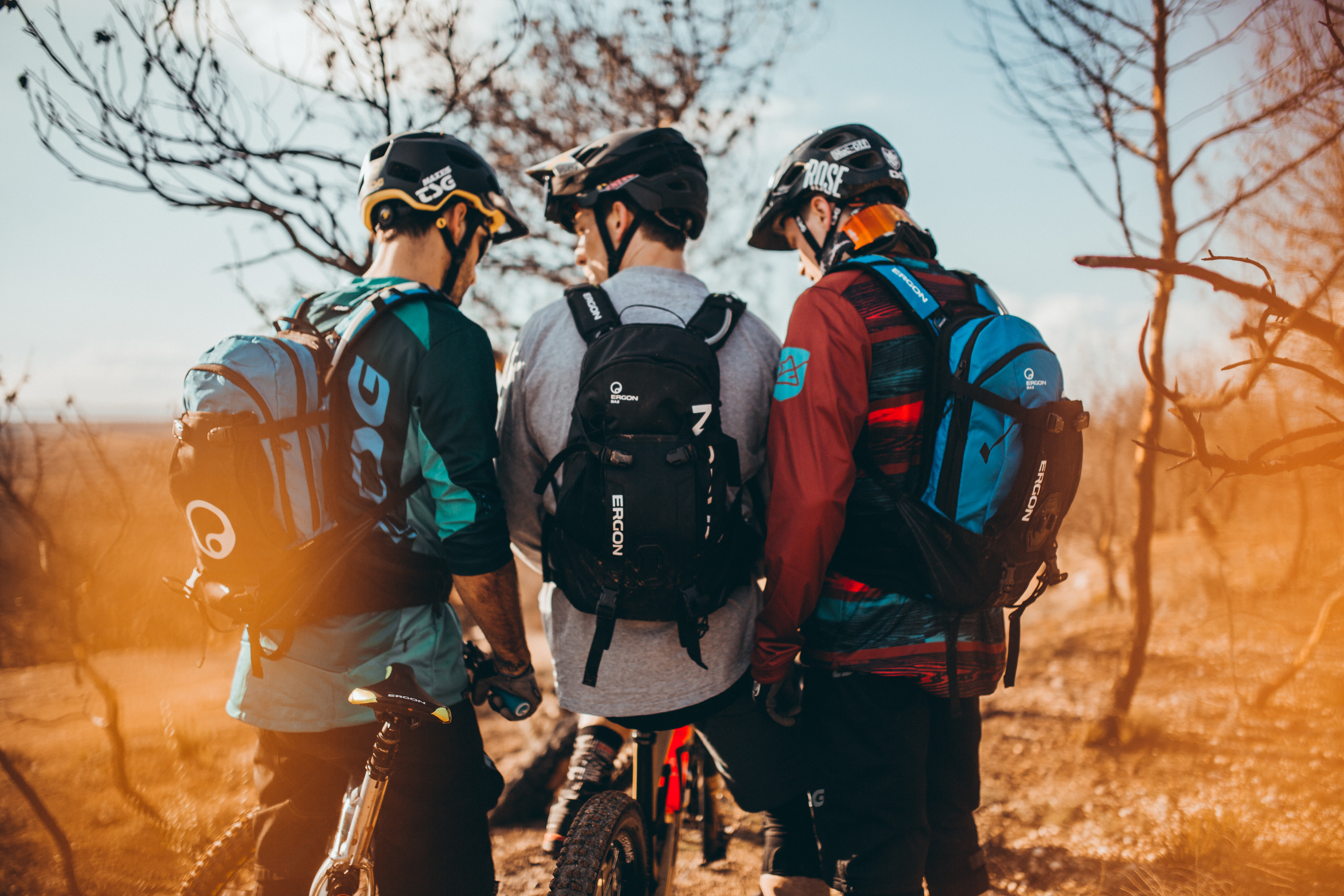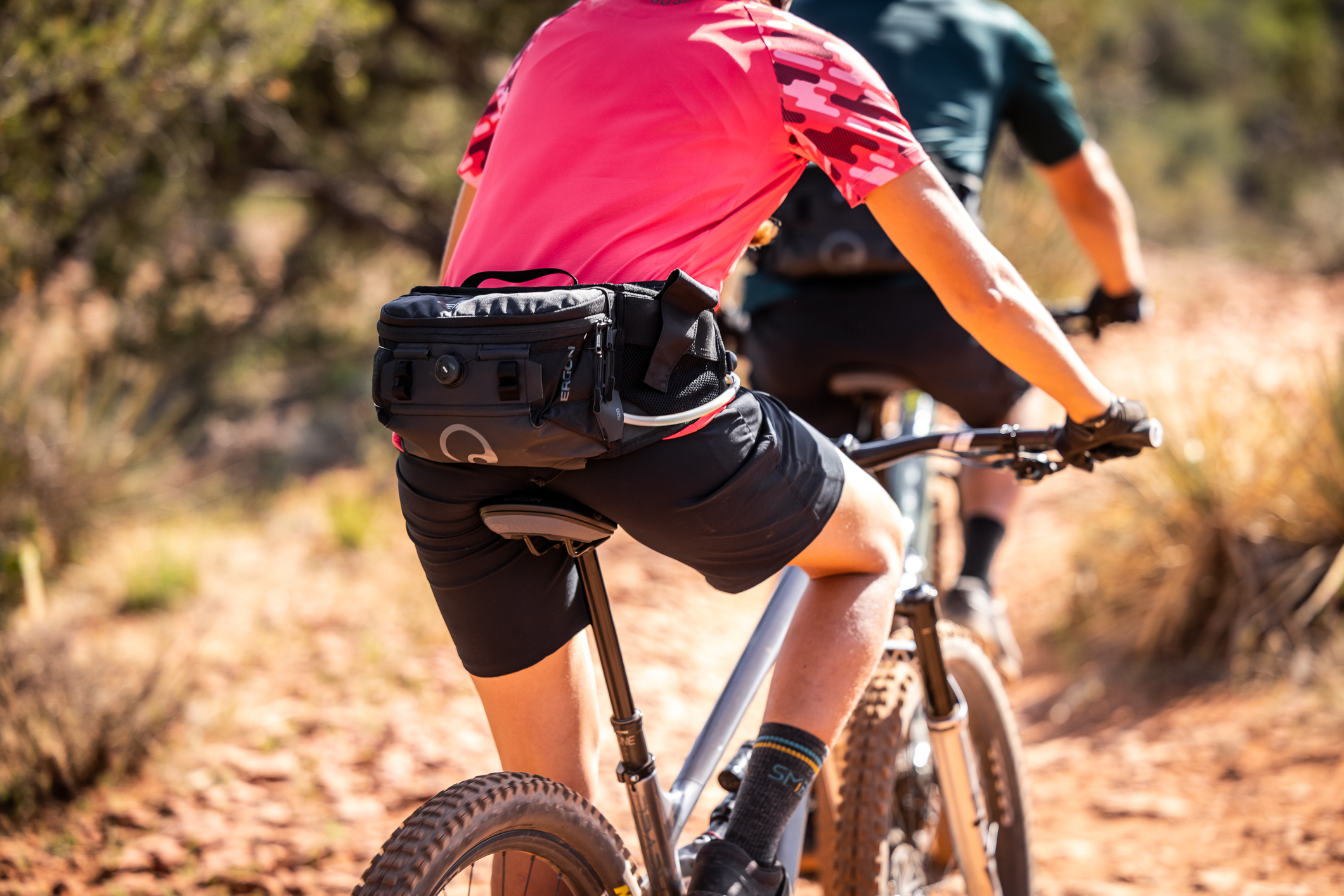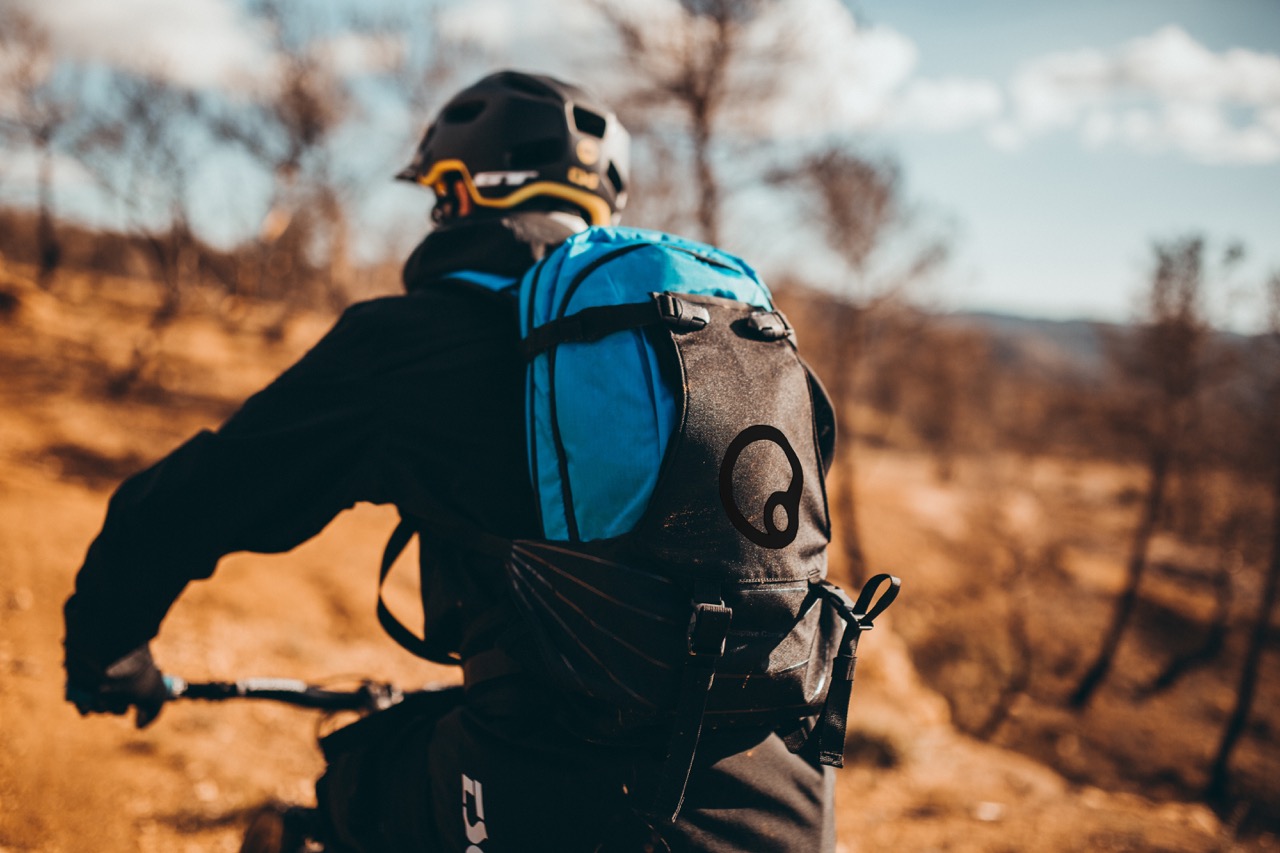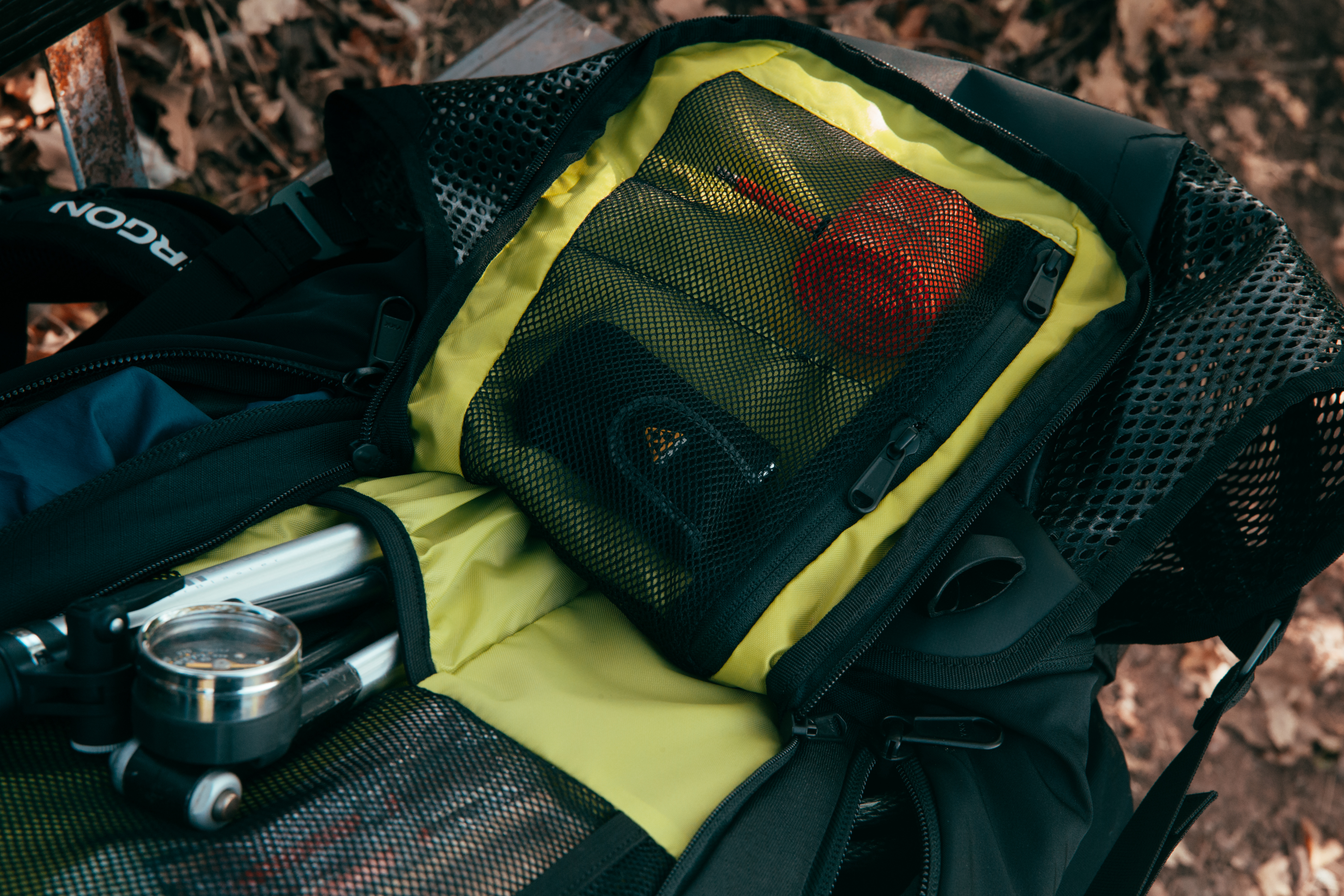Packing Your MTB Backpack - How to Do It Right!

Packing Your Backpack Correctly—Whether you're taking on Transalp, a multi-day tour, or a day ride, here's a guide and a practical packing list.
Packing Your Backpack Correctly - Tips & Packing List for MTB Tours
A mountain bike tour always requires additional equipment. Off the beaten path, perhaps even away from civilization, spare parts or assistance are often not just a short walk away. Therefore, you should think about your equipment. What items belong in the bike backpack for a day tour, and what is necessary for multi-day tours, such as a Transalp? We have compiled tips, tricks, and a packing list for your MTB backpack to check off—ensuring ultimate riding fun and the best possible safety on your tour, no matter how long it is.

Packing the MTB Backpack – The Right Backpack for Every Tour
Before you start packing your backpack, you need to understand that you need different backpacks for different tours. In this article, we distinguish between the following tours:
- Short Ride: A short tour of less than three hours or, for example, a day in the bike park where you have quick access to a locker or your car is reachable on foot if necessary, so you don't need to carry much on the bike.
- Day Tour: A tour that lasts more than three hours but does not include an overnight stay. Even here, in the worst case, the car, train station, or other assistance is still reachable, albeit not immediately close by.
- Multi-Day Tour: A tour with overnight stays. Here, you move far enough away from your base that you need to have everything you need with you. A multi-day tour, such as a Transalp, is considered here. We assume that on a multi-day tour, you can stay in accommodations like a hotel or a hut every evening.
- Extreme Tour: A tour or bikepacking trip over several days without fixed overnight accommodation, such as a wilderness tour through the Canadian Rockies or the Australian Outback. Here you need to be prepared for everything and completely self-sufficient: tent, sleeping mat, cooking utensils – everything must be carried.
Ergon offers ergonomic backpacks suitable for every tour. If you're in the bike park and never far from a locker or car, we recommend the extremely lightweight Protector Backpack BP1 Protect, which is so compact that it even fits under the jersey. For short rides, the BA Hip Pack offers more than enough space for all essentials.

For technically demanding enduro or trail day tours, the BA2 and BA2 E Protect, and the BA3/BA3 E Protect are great options, offering ergonomic carrying comfort and a separate pocket for small spare batteries.

Must-Haves on Every Tour
Whether you're cycling through the Alps or shredding the local bike park, there are some things you should always carry on every mountain bike tour. Primarily, it's about quick help for both you and your bike.
Essential Items for Riders:
- Water: A hydration bladder or water bottle
- Energy: Two sports bars or similar
- First Aid Kit: Small and compact for emergencies
- Repair Kit: Includes tire repair materials (tubeless or tube), a spare tube, and a compact tool set
- Mobile Phone: To call for help in case of an emergency
- Spare Parts (for multi-day tours): Spare chain links and spare brake pads

Packing the MTB Backpack – The Right Clothing
In addition to a good helmet and appropriate protection (like pads and bike gloves), make sure you have weather-appropriate clothing. Depending on your tour's length, also carry spare clothing (e.g., a spare jersey and functional jacket) in your backpack.
Rain Gear: Always include this, as the weather can change quickly, especially in the mountains. There's nothing worse than cold soggy clothing that makes your ride miserable.
For longer tours like an alpine crossing, don't forget comfortable shoes or hut shoes so you can dry and air out your footwear, avoiding the discomfort of walking barefoot through a hotel.

No Movement Without Food
Keeping your energy levels up, especially on multi-day tours, is crucial. Dehydration or poor nutrition can result in cramps, fatigue, and performance issues in the following days.
Essential Food:
Pack enough food for the duration of your ride. Power bars, nuts, and gummy bears are excellent quick sources of energy to avoid dips in blood sugar. Make sure to have sufficient water, whether through a hydration bladder or water bottles, depending on your preference.

Packing the E-MTB Backpack – More Power!
If you're riding an e-mountain bike, there are a few additional items to consider, especially for longer tours with steep climbs. A spare battery is essential for longer trips so that you don't run out of power during tough ascents. It's best to store the second battery securely in a separate compartment to ensure its safety. Some packs, like the Ergon BA3 E Protect, even have dedicated battery pockets. If you're going on a long tour, include a charger so you can recharge overnight, as most hotels and Alpine huts offer charging facilities.

Packing Order and Other Tips
The organization of your MTB backpack is crucial. A poorly packed bag can lead to discomfort, difficulty accessing important items, or even damage to your gear.
Ergon backpacks offer many compartments to help with this organization and ensure easy access to your gear when you need it most.
Packing Tips:
- Heavy bottom, light top: Pack heavier items as low as possible in your bag to prevent them from damaging lighter items and to keep the backpack's center of gravity low.
- Priorities first: Keep essential items easily accessible—if it starts to rain, your rain gear should be at the top, not buried beneath layers of other equipment.

Packing the MTB Backpack – The Ultimate Checklist for All Rides
Here's the ultimate packing checklist for your MTB backpack. Keep in mind that this list serves as a roadmap—you should always assess your needs for each specific ride and adjust accordingly. For example, some items can be carried directly on the bike or your body (such as water bottles or a fitness watch) and don't necessarily need to go in the backpack. The list is comprehensive, but you might also have personal items like a camera or watch that you want to include for your ride.
| Short Ride | Day Tour | Multi-Day Tour | Extreme Tour |
| Equipment for E-Mountain Bikes | ||||
| Spare Battery |
| X* | X | X |
| Battery Charger |
|
| X | X |
| Tools | ||||
| Mini Tool with Bit Tool | X | X | X | X |
| Multi Tool with Pliers |
| X | X | X |
| Chain Tool |
| X | X | X |
| Chain Pin |
| X | X | X |
| Spoke Wrench |
| X | X | X |
| Rag | X | X | X | X |
| Chain Oil |
|
| X | X |
| Shifter Cable |
| X | X | X |
| Cable Bolt | X | X | X | X |
| Cable Ties | X | X | X | X |
| Spare Parts | ||||
| Chain Links |
| X | X | X |
| Chain Lock |
| X | X | X |
| Derailleur Hanger |
|
| X | X |
| Brake Pads |
|
| X | X |
| Shift Cable & End Cap |
| X | X | X |
| Spokes + Nipples |
| X | X | X |
| Cable (E-Bike) |
|
| X | X |
| Terminal Block (E-Bike) |
|
| X | X |
| Screws (Pedals, Chain Link, Brake Disc) |
|
| X | X |
| 1 Pair of Spare Cleats |
|
| X | X |
| Tire Repair Kit | ||||
| Mini Pump/Shock Pump | X | X | X | X |
| Spare Tube | X | X | X | X |
| 2 Tire Levers | X | X | X | X |
| Patches |
| X | X | X |
| Tubeless Repair Kit** | X | X | X | X |
| Sealant** | X | X | X | X |
| Presta Valve Insert** |
|
| X | X |
| CO2 Cartridges/Air Cartridges |
|
| X | X |
| Adapter Presta to Schrader Valve |
|
| X | X |
| Change of Clothes | ||||
| Rain Jacket | X | X | X | X |
| Rain Pants | X | X | X | X |
| Helmet Rain Cover |
| X | X | X |
| Gloves |
|
| X | X |
| Arm Warmers and Leg Warmers |
| X | X | X |
| Functional Shirt/Undershirt |
| X | X | X |
| Midlayer (Insulation Jacket) |
|
| X | X |
| Socks |
|
| X | X |
| Jersey |
|
| X | X |
| Bike Shorts |
|
| X | X |
| Bike Shoes |
|
|
| X |
| Thin Helmet Cap/Bandana |
| X | X | X |
| Buff/Neck Scarf | X | X | X | X |
| Comfortable Shoes/Hut Shoes |
|
| X | X |
| Spare Clothes |
|
| X | X |
| Hip Belt |
|
| X | X |
| Provisions | ||||
| Water Bottle | X | X | X | X |
| Hydration Bladder (2-4 liters) |
| X | X | X |
| Energy Food (Power Bars, Nuts, Gummies, Magnesium, etc.) | X | X | X | X |
| Provisions (Canned Food, Pasta, etc.) |
|
|
| X |
| Other Equipment | ||||
| Map |
| X | X | |
| Smartphone with Navigation App | X | X | X | X |
| Personal Medications | X | X | X | X |
| Chamois Cream |
|
| X | X |
| First Aid Kit | X | X | X | X |
| Sunscreen | X | X | X | X |
| Towel |
|
| X | X |
| Wallet (including ID, debit card, and cash) | X | X | X | X |
| Toilet Paper |
| X | X | X |
| Bike Lock |
| X | X | X |
| Personal Care Accessories (Toothbrush, Deodorant, etc.) |
|
| X | X |
| Hut Sleeping Bag |
|
| X |
|
| Sleeping Bag |
|
|
| X |
| Tent |
|
|
| X |
| Sleeping Mat |
|
|
| X |
| Eating and Cooking Utensils |
|
|
| X |
| Camping Stove |
|
|
| X |
| GPS including Batteries |
|
| X* | X |
| Emergency Light (Rear Light, Handlebar Light) |
|
| X | X |
| Helmet Light |
|
| X | X |
| Plastic Bags/Garbage Bags | X | X | X | X |
*for long or demanding routes **for tubeless systems
